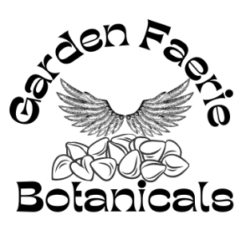
Keeping Heirloom Squash Varieties Pure When Saving Seeds
It is that time of year! I find myself taping blossoms at night before the sun goes down and opening them and self-pollinating first thing in the morning.
Here’s a step-by-step guide on how to self-pollinate squash, which is a crucial skill for gardeners who want to preserve the genetic purity of specific squash varieties or for those who have limited pollinator activity in their gardens.
- Understanding Flower Types: First, it’s important to recognize that squash plants produce both male and female flowers. The female flower is distinguished by a small, bulbous ovary at its base, shaped like a miniature squash. The male flower is typically on a longer, slender stalk and lacks this ovary.
- Preventing Unwanted Pollination: The goal of self-pollination is to ensure the squash plant is fertilized with its own pollen, maintaining the purity of the variety. This is particularly important for heirloom or purebred varieties. To prevent cross-pollination from other squash plants (which can be carried out by wind or insects), you’ll need to protect the flowers.
- Choosing and Preparing Flowers for Self-Pollination: Select a healthy female flower and several male flowers on the same plant. The evening before these flowers are expected to open, carefully tape them shut with a gentle, non-sticky tape like painter’s tape. This step is crucial as it ensures that the flowers are not exposed to pollen from other plants overnight, a time when many pollinating insects are active.
- Performing the Self-Pollination: Early in the morning, remove the tape from the flowers. Gently peel back the petals of the male flower to expose the stamen, which carries the pollen. Then, carefully open the female flower and brush the pollen from the male flower onto the stigma in the center of the female flower. This manual transfer of pollen mimics what would naturally occur with pollinators but ensures that only pollen from the same plant is used.
- Securing the Pollinated Flower: After pollination, the female flower can be taped closed again to prevent any accidental introduction of pollen from other sources. This step is particularly important if there are other squash varieties growing nearby.
- Labeling and Monitoring: Mark the pollinated female flower with a tag or string. This helps in identifying which fruits were self-pollinated when it’s time to harvest seeds. Over the next few days, watch for the development of the fruit. If the fruit starts to grow and doesn’t shrivel up, it indicates successful pollination.
- Harvesting and Saving Seeds: Once the squash has fully grown and matured, you can harvest it. For seed saving, it’s best to let the squash cure for a bit after harvesting, which helps in the development and viability of the seeds. Extract the seeds, clean, and dry them thoroughly before storing.
By following these steps, you can effectively self-pollinate squash plants, ensuring the genetic consistency of the variety, especially for seed-saving purposes. This method is particularly useful for gardeners aiming to maintain specific characteristics of heirloom or specialty squash varieties.
Additional Tips When Saving Heirloom Squash Seeds
- Timing: Pollination should be done as soon as flowers open, preferably in the morning.
- Gentleness: Be gentle with the flowers to avoid damaging them.
- Weather Considerations: On cool, cloudy days, flowers might not open fully, making pollination more challenging.
- Multiple Attempts: If you’re not sure about the success of your pollination, you can repeat the process on subsequent days with new flowers.
Self-pollinating is a valuable technique for maintaining the integrity of specific varieties, especially for heirloom varieties of squash and rare types. It’s also a useful skill in urban gardens where natural pollinators might be scarce.
There are many resources available that teach seed saving. I invite you to explore some of the information that the Seeds of Diversity has on this subject also.
See you in the garden!
